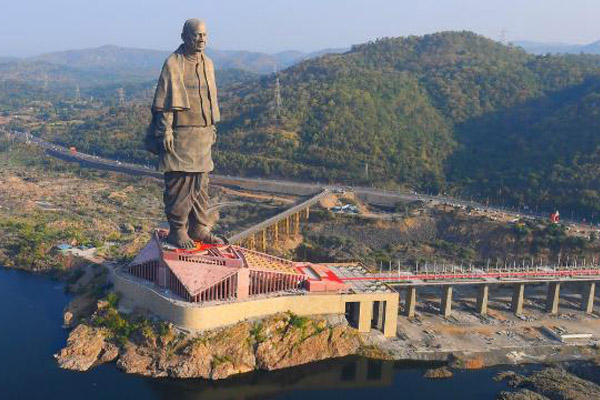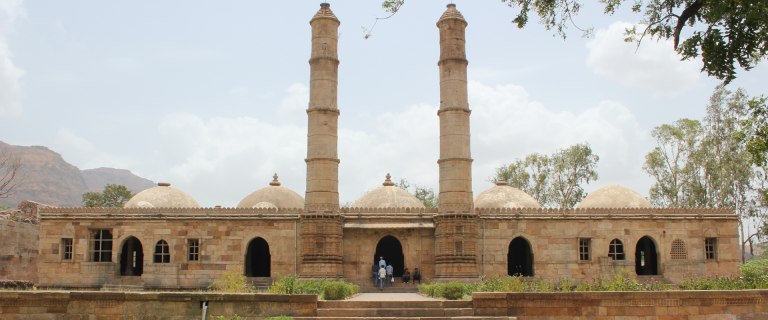
Champaner (25km)
Champaner exhibits some of the finest examples of fusion architecture, sculpted by mellifluous architects from different cultures and civilizations. Declared as a World Heritage Site by UNESCO, Champaner is scattered over an area of 6 sq km around the foothills of Pavagadh. The main monument is the Jumma Masjid which was built in 1513. A satellite mapping of the area has revealed large tracts that are yet to be excavated.
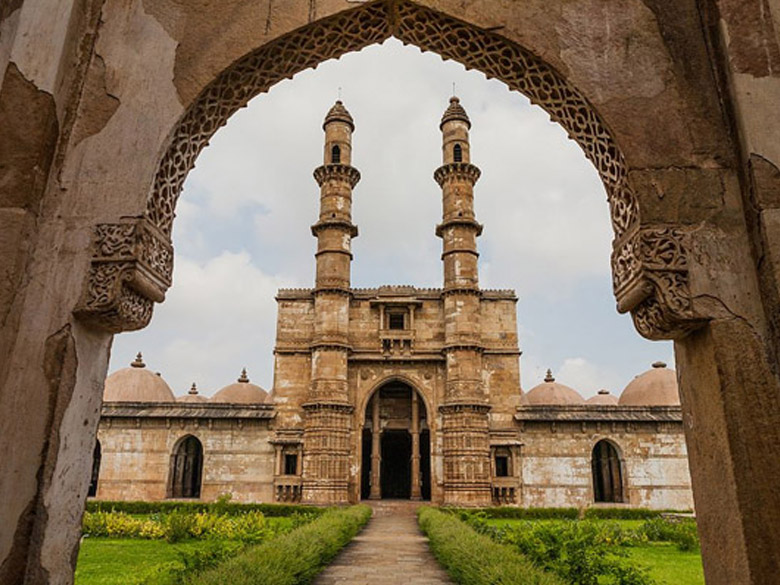

Pavagadh (30kms)
The old fort with its still-intact rocky defenses, houses the Makai Kotha where the rulers kept their grain. Pavagadh, with its temples, wells and numerous religious monuments, is an important religious place for Hindus and Jains.
Mahakali temple (Atop Pavagadh Hill)
The Goddess Mahakali temple, located 945 meters above sea level, is very old and is considered to be existing since Lord Ram’s time. You may reach the temple either by climbing the stairs or by the rope-way.
Pavagadh is also a popular picnic spot for its scenic location. The Pavagadh hill offers excellent rock – climbing and trekking opportunities for the more adventurous tourists.
The Sanctuary
The Jambughoda wildlife sanctuary, (spread over an area of 130 sq kms) was a part of the erstwhile princely state of Jambughoda before independence. The sanctuary was established in 1990 at the behest of the late Prime Minister of India, Mr. Rajiv Gandhi. Teak, Bamboo and Mahudo along with other indigenous trees form the major canopy of the forest.
The sanctuary harbors several wild animals, birds and flora, including plants and herbs of medicinal value. Apart from the panther and the four-horned antelope, the habitat is shared by other animals such as blue bulls, hyena, jackal wild boar and an occasional sloth bear. You have to be lucky to spot a panther or four-horned antelope as they are elusive animals.

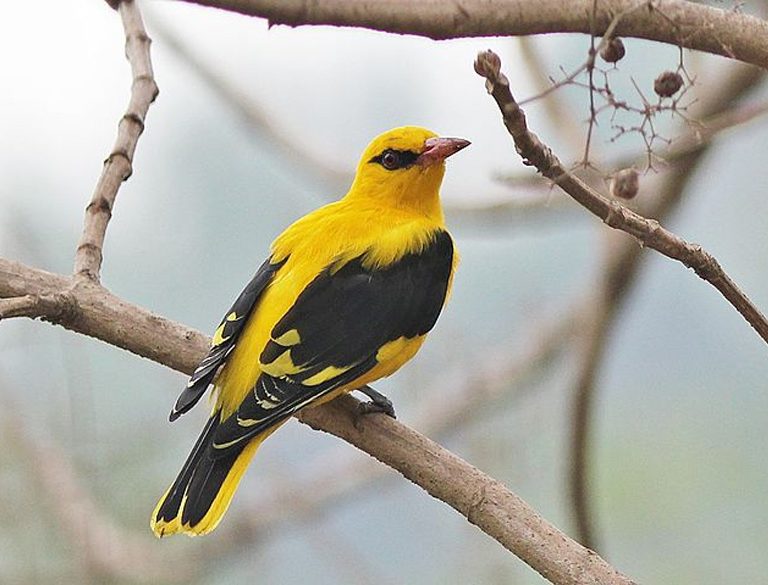
In addition, the sanctuary is also home to a wide variety of snakes including cobra, krait, viper, rat snake, and python, and interesting birds such as the Paradise Fly Catcher, Golden Oriole, Tailorbird, green pigeon, grey partridge and over a hundred other species. During winters, the lakes close-by, attract migratory birds, such as Pin-tails, Comb Duck, Teals, and Brahminy. Eminent personalities like Dr. Salim Ali, the noted Ornithologist, research scholars like Dr. G M Oza and Dr. Tvisha Pandya & others have spent their valuable time studying plant bio-diversity & the habits of various birds & animals in their natural surroundings.
It will be worthwhile carrying a pair of binoculars and a camera to enjoy the forest and take back memories of a thrilling experience..
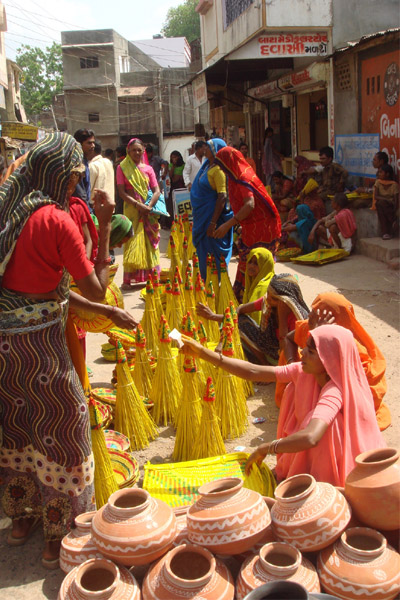
Glimpse into The Tribal Culture & Lifestyle
Most of the tribals living in & around Jambughoda are Rathwas & Nayaks. They are superstitious and God-fearing.
The entrance to their home is through a richly carved wooden door with figurines and tribal icons. The walls of the front verandah of some houses is usually decorated with Pithora paintings. The tribals do not live in hamlets. Their dwellings are separated from each other by a considerable distance.
Haat is a weekly market place to which the tribal from the surrounding areas bring their hand-made products such as earthenware, Bamboo Products, rudimentary farm implements and farm produce to sell or barter. Apart from these products, there is very active and noisy haggling over fowl, goats, and bullocks. While a serious sale deal is being made in one corner, you may get the fragrance of spices,snacks and meals being cooked in another add to the mystique charm and attractiveness of the place. The haat continues till the last rays of the setting sun.
During Holi week
Bhagoria
Bhagoria is a time when the Haats are more colourful and wear a festive look. Men and women from Tribal communities dress up traditionally and wear silver jewellery and come to the market to do their purchases for Holi, catch up with one another. The younger lot look for their future life partners too. Bhagoria begins a week before Holi.
Kavant Gher
Kavant Gher takes place two days after Dhuleti. Kavant is a tribal town 55 kms from Jambughoda. ‘Gher’ means a fair. It is a fair where hundreds of tribal people visit. You will find tribal dance groups performing in the lanes of the town.They paint themselves, where peacock feathers on their heads, bells around their waists and carry musical instruments like drums, flutes etc.
It is a photographer’s delight to witness this celebration.
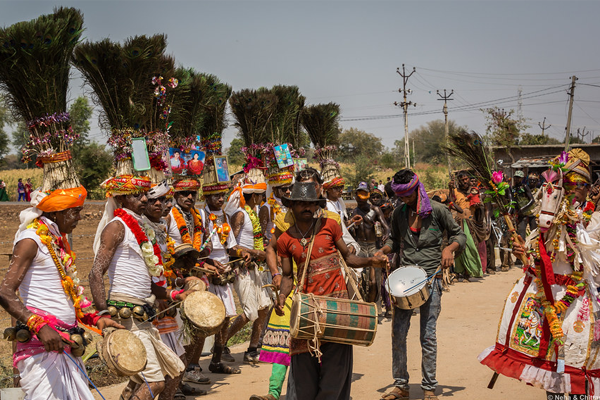

Sankheda (38 km)
Artistically lacquered furniture (on teak wood alone), the only one of its kind probably in the world, is manufactured at Sankheda, by carpenters from the Kharadi community. They also have a beautiful temple of Lord “Vishwakarma” in the lane that they live in.
Dabhoi (50km)
Dabhoi finds its reference in one of the astronomical treatise of the sixth century A.D. It enjoyed the glory of being a pilgrim center. This glory & prominence was due to the shrine of Kali/Kalika of antiquity which can still be traced. Besides the size of the town, the other aspect of excellence was the ornamentation of all the entrance gates. The chief gate is called ‘The Hira Gate’. This architectural marvel has intricate wooden carving done with fine grain stone. This and the other marvelous entrances had attracted the attention of visitors during the eighteenth & nineteenth centuries and continue to remain the subject of interest with scholars of Archaeology, History and Art History.
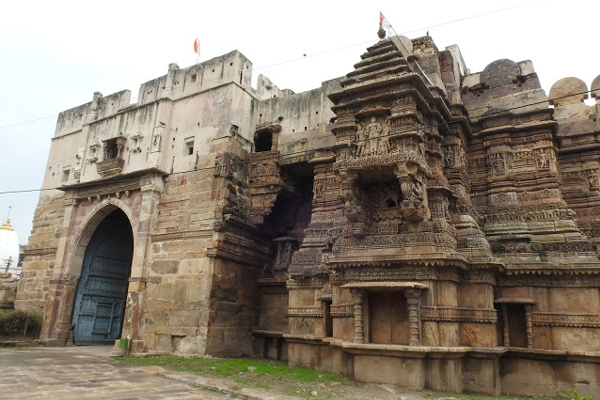

Jhund Hanuman, Hathni Maata & Dams
Jhund Hanuman (13 km)
This is another interesting place to pay a visit to. It boasts of an 18-ft tall statue of Lord Hanuman believed to have been made during the Mahabharata era.
Hathni Mata Cave Temple & Waterfalls (21 km)
The cave houses a rock which appears like a seated baby elephant is definitely worth a visit. The locals worship it as Hathni Mata (Elephant Goddess). During monsoon, the waterfall at Hathni Mata, hidden amongst the shaded green hills, is a sight to behold.
Kada Dam (4 km)
This water body adds to the aesthetic settings and habitat diversity. A place where the sky looks like a painter’s palette, where if you stand still, you can hear the sounds of the wilderness. Enjoy the panoramic view in the middle of nowhere. A must-visit for those who want to indulge in nature.
Vadhwana Bird Sanctuary (45 km)
Attracts innumerable species of indigenous and migratory birds in the winters. A must-visit for those interested in bird-watching.
Sukhi Dam (21 km)
Know the earth, feel the breeze, trudge through the rocky terrain and explore for yourself all of this at the Sukhi Dam. Recommended for rock climbing and trekking too.
Targol Dam (16km)
Another beautiful water body, a must-visit for all the nature lovers.
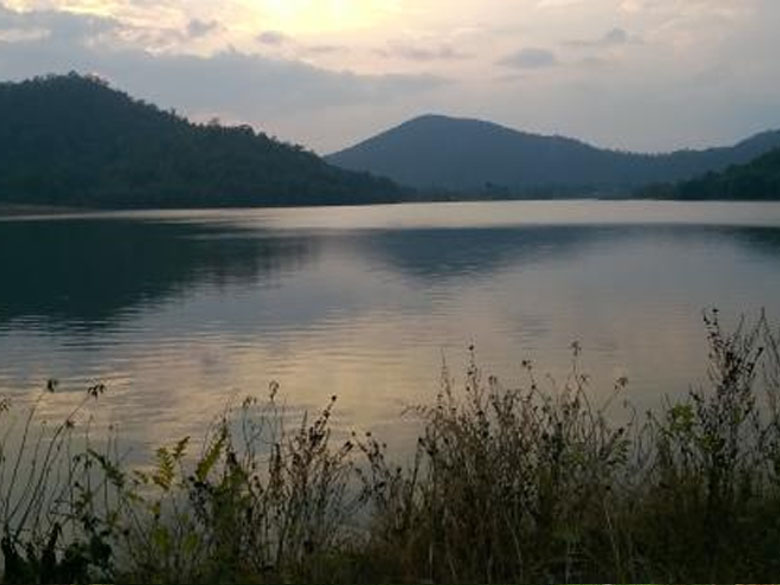
Statue of Unity (72 km)
The Statue of Unity is a colossal statue of Indian statesman and independence activist Sardar Vallabhbhai Patel, who was the first Deputy Prime Minister and Home Minister of independent India and the chief adherent of Mahatma Gandhi during the non-violent Indian Independence movement. A tributary endeavor to the Iron Man of India, the Statue of Unity is an iconic 182-meter-tall statue situated on the isle of Sadhu-Bet. Located between the mountain ranges of Vindhyachal and Satpuda, this monument has many other attractive tourist spots in its proximity such as the Valley of Flowers, the Shoolpaneshwar Sanctuary and sacred temple, the Sardar Sarovar Dam and its water dykes, the scenic Zarvani Falls and majestic palaces of Rajpipla.
